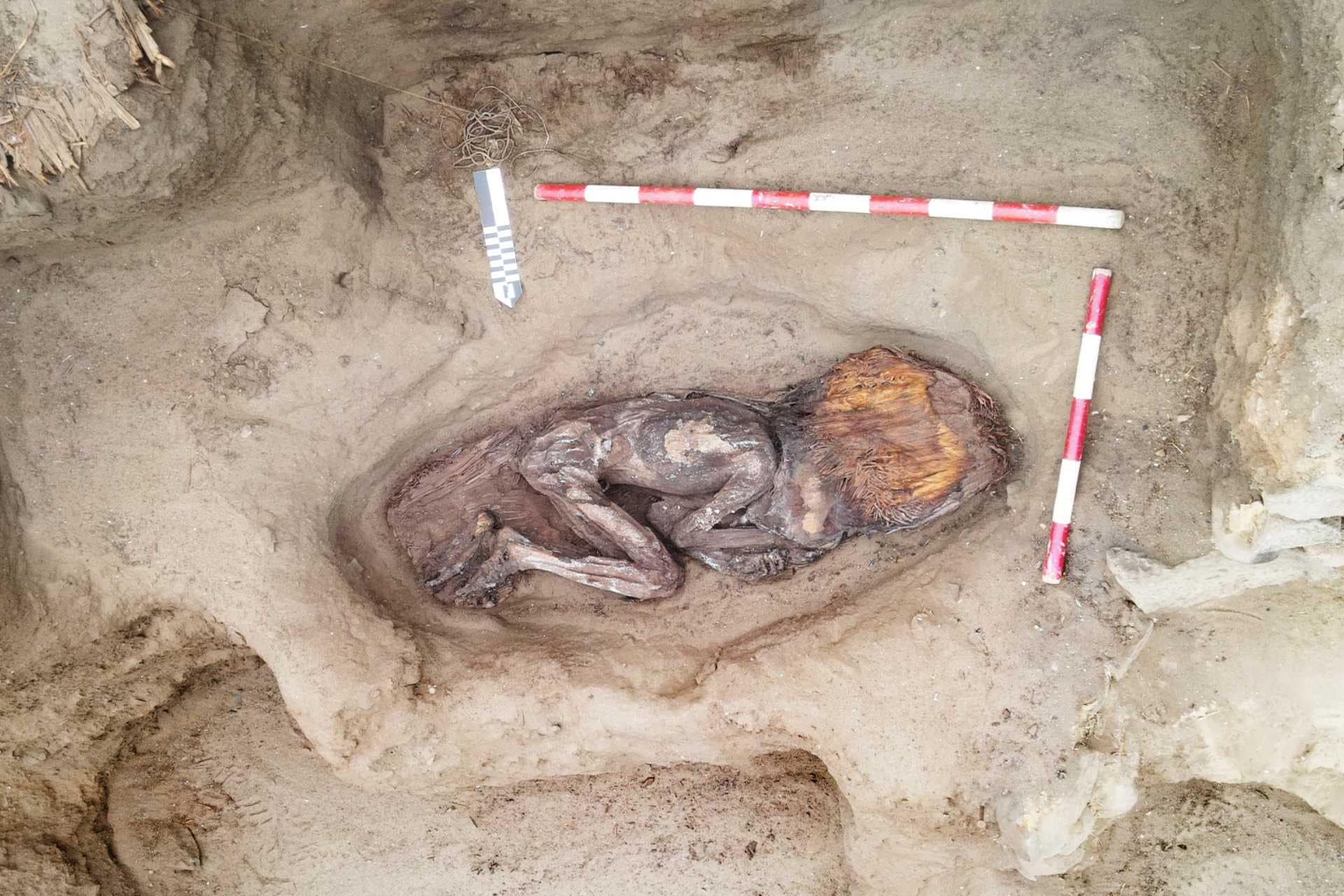

Archaeologists in Peru have unearthed the 5,000-year-old remains of a noblewoman at a sacred site linked to the ancient Caral civilization, offering fresh insight into the role of women in one of the oldest known cultures in the Americas.
The remains were discovered at Áspero, a coastal settlement associated with Caral, located about 180 kilometers (112 miles) north of Lima and 20 kilometers from the Pacific Ocean. Once used as a municipal dump, Áspero became an archaeological site in the 1990s.
The Caral civilization flourished between 3000 and 1800 B.C., around the same time as early civilizations in Egypt, Mesopotamia, and China. Unlike those cultures, Caral developed in complete isolation, according to researchers.
Caral is known for its large pyramids, sunken circular plazas, and intricate irrigation systems. Evidence suggests its economy was based on fishing, agriculture, and long-distance trade.
Despite its advanced urban planning and impressive architecture, Caral left no evidence of warfare, a feature that sets it apart from many ancient cultures.
Archaeologist David Palomino said the remains belonged to a woman between 20 and 35 years old, estimated to be about 1.5 meters (5 feet) tall. Her body was found wrapped in multiple layers of fabric and covered with a mantle of blue and brown feathers, possibly from an Amazonian macaw. Parts of her skin, hair, and nails were still intact.

Nearby the buried noblewoman, archaeologists in Peru found burial offerings that included vases, gourds, baskets, and a toucan’s beak – objects that suggest the woman held a high social position. Her headdress, which appeared to signal elevated status, further supported the belief that she was a figure of prominence in Caral society.
The discovery challenges long-held assumptions that power in early Andean civilizations was mostly held by men.
According to Palomino, “This is an important burial because it has elements that correspond to a woman of high status.” He added, “Not only men had an important association in this civilization, but this was also complementary with that of women.”

Researchers say this burial points to a more balanced social structure, where women also played central roles in governance, ritual, and cultural development.
Caral, located in the fertile Supe Valley, is recognized as the oldest city in the Americas and was declared a UNESCO World Heritage Site in 2009.
The latest find adds to growing evidence that the Caral civilization was both sophisticated and inclusive in its social structure, placing women in positions of influence at a time when many other early cultures were emerging around the world.
